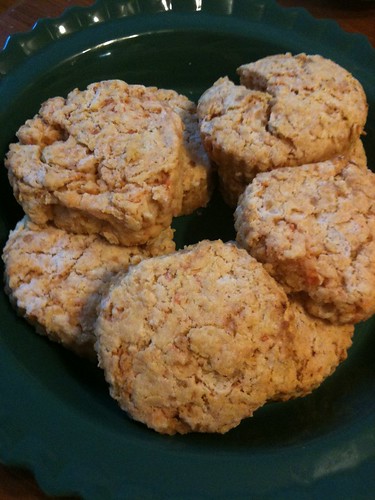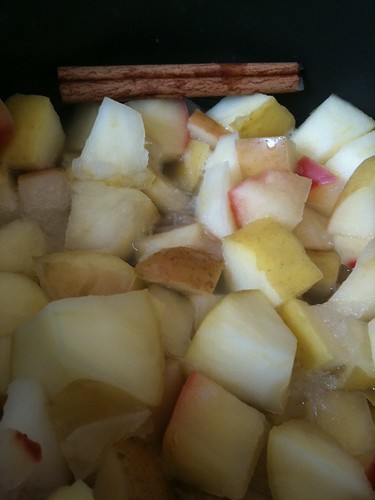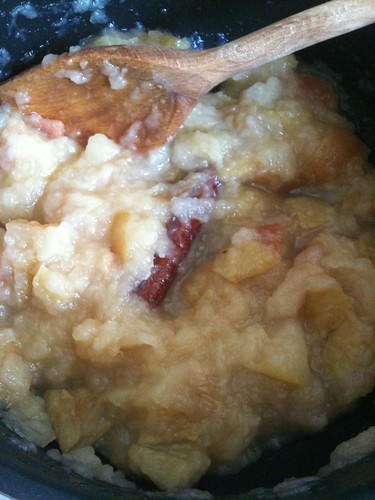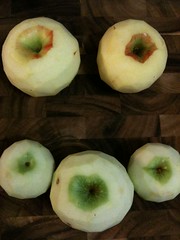
Over at smittenkitchen it has been proclaimed that the crisp is not just for dessert. If this is revolution, I am Heath Ledger in the Patriot. Fruit and granola? Of course this is breakfast food! The apples go juicy and soft, like apple pie filling, while the granola browns into a chewy crust (with the help of butter and honey). Less sugar, no butterscotch sauce, ice cream swapped for yogurt. I could be writing a health blog.

On a side note, I appreciated that this recipe allowed for flexibility: I didn’t have nuts on hand, I added allspice for kicks, I measured nothing, and my crisp still turned out delicious. These are ingredients you can’t mess up.

So hear me when I say, “I made an apple crisp and topped it with vanilla yogurt.” Now think about it until you have to make your own. Viva la revolution!
Gateway Apple Crisp (adapted from smittenkitchen)
6-ish (mixed) apples, peeled, cored and chopped
Juice of half a lemon
2 tablespoons sugar
3 tablespoons flour
1 teaspoon allspice
Freshly grated nutmeg
Freshly grated cinnamon
Salt
pinch!
4 tablespoons unsalted butter
1/4 cup honey
1/2 cup flour
2 heaping cups oats
Preheat oven to 350°F. Squeeze lemon half over apple slices. Mix in sugar, flour, allspice, and dust with freshly grated nutmeg and cinnamon for depth. Pour mixture into that 9-inch spring-form pan you bought thinking you would never use it until you realized you have no other smallish baking dish. Melt butter in a small saucepan and add honey. Combine flour and oats and melty, sticky saucepan contents. Pinch of salt! Pour this over the apples and bake until the apples are bubbling and the granola is toasty brown—about 1 hour (maybe more if your oven is like my oven and cannot regulate its temperature to cook a chicken).

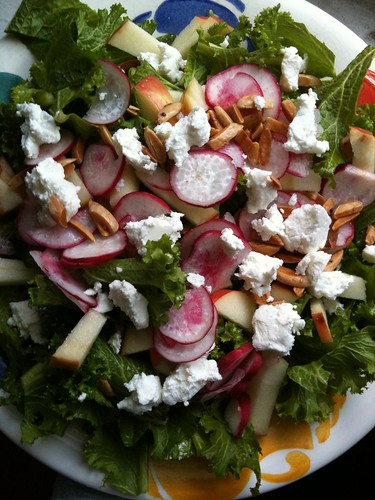


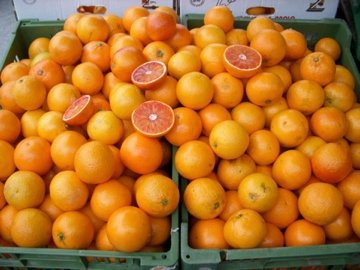

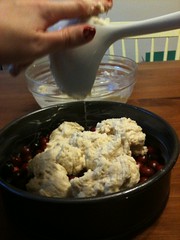
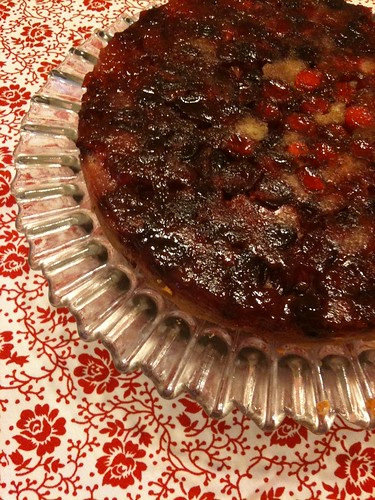
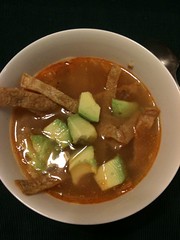
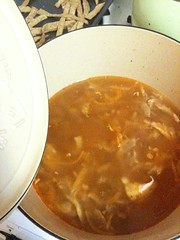
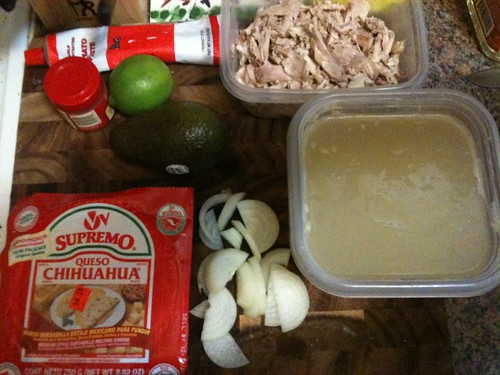
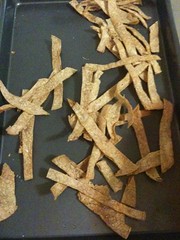

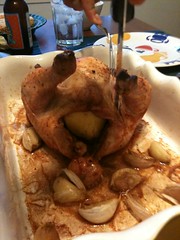
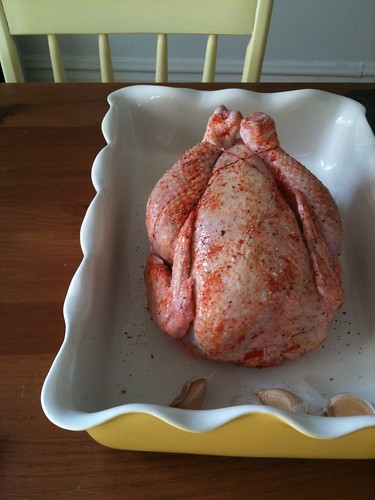 At 1 pm I put my beautiful Gunthrop Farms chicken—which had been stuffed with lemon, surrounded by garlic cloves, and sprinkled with paprika, as per Laurie’s bequest—into a 300-degree oven, where it would cook for two hours. According to Laurie, “The chicken is done when the leg bone wiggles and the skin is the color of teak.” Super.
At 1 pm I put my beautiful Gunthrop Farms chicken—which had been stuffed with lemon, surrounded by garlic cloves, and sprinkled with paprika, as per Laurie’s bequest—into a 300-degree oven, where it would cook for two hours. According to Laurie, “The chicken is done when the leg bone wiggles and the skin is the color of teak.” Super.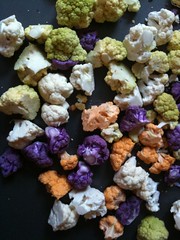 Because I was roasting a chicken, I decided to do it up. I found four colors of cauliflower at the farmers’ market, along with apples, brussels sprouts, chestnuts, and sweet potatoes. A menu was formed:
Because I was roasting a chicken, I decided to do it up. I found four colors of cauliflower at the farmers’ market, along with apples, brussels sprouts, chestnuts, and sweet potatoes. A menu was formed: 